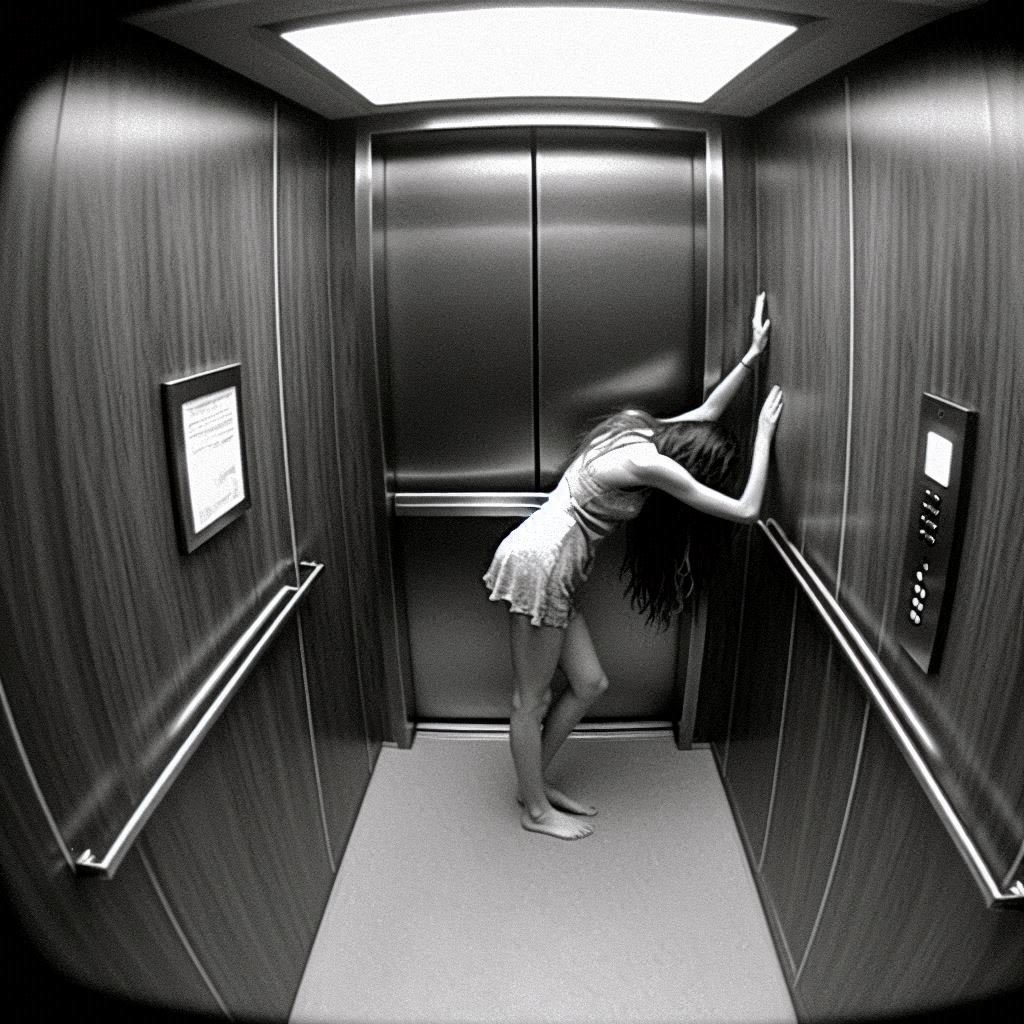Listen to “The Elevator to Nowhere” on Spreaker.
Alright, settle in, because today we’re diving into one of the strangest and most unsettling mysteries of the 21st century. It’s the kind of story that crawls under your skin, not just because of what happened, but because of how little we actually understand about it.
It has everything — a young traveler full of life, a hotel with a horrifying history, and a single piece of video footage so bizarre, so haunting, that once you’ve seen it, you’ll never forget it.
This is the story of Elisa Lam.
The Girl and the Hotel
Elisa Lam was 21 years old, a student from Vancouver, Canada. She was bright, curious, and adventurous — the kind of person who loved writing her thoughts online, updating her blog, and sharing her life on social media.
It was early 2013, and Elisa had decided to take a solo trip down the West Coast of the United States. This wasn’t some random idea. She wanted freedom, adventure, and new experiences before returning to her studies at the University of British Columbia.
Her parents were supportive, but also worried. Elisa struggled with bipolar disorder and depression. She took medication and was usually good about managing it, but traveling alone always carried risks. To ease their worries, Elisa promised them she’d call every day. And, true to her word, she did. Every night, she’d check in.
On January 26, 2013, Elisa arrived in Los Angeles. She checked into a hotel downtown called the Cecil Hotel.
Now, if you’ve never heard of the Cecil Hotel, here’s what you need to know: it is not just another hotel.
On the outside, the Cecil looks like an aging, 1920s high-rise. But on the inside — its history is dark, and I mean really dark. Over the decades, it became infamous for suicides, murders, drug overdoses, and even being a temporary home to serial killers. Richard Ramirez, the “Night Stalker,” stayed there during his killing spree in the 1980s. Another killer, Jack Unterweger, lived there too. Locals considered it cursed. Some even called it haunted.
But Elisa didn’t seem to know — or care — about that. She checked into a room on the 14th floor.
At first, she was placed in a shared room with other guests. But within days, the hotel moved her to a private room. Why? Because her roommates complained Elisa was acting strangely.
No one really knew what “strange behavior” meant. But it would become very important later.
The Disappearance
For several days, everything seemed normal. Elisa explored the city, posted updates online, and kept calling her parents.
But then came January 31, 2013. That was the day she was supposed to check out and head to Santa Cruz. She never did.
Her parents didn’t hear from her. They tried calling, texting — nothing. The silence was immediate and alarming because Elisa had never missed a check-in.
By the next day, February 1, they reported her missing. The Los Angeles Police Department began their search.
Police started with Elisa’s hotel room. Her belongings were still inside — her laptop, clothes, and medication. Everything was neat, as if she had just stepped out for a minute. There were no signs of a struggle, no forced entry. It was like she had just… disappeared.
The police questioned staff, searched the lobby, the hallways, even the roof. But nothing. It was as if she had simply vanished into thin air.
The Elevator Video
With no leads, the LAPD turned to surveillance footage. And that’s when they found it.
On February 15, 2013, they released a video to the public. It came from one of the Cecil’s security cameras, placed inside an elevator.
The footage was recorded on January 31, the very last day Elisa was seen alive.
It’s about four minutes long. No sound. Grainy. Black and white. But what it shows is… disturbing.
The video begins with Elisa walking into the elevator. She looks casual, in a red hoodie and shorts. She presses several buttons, then waits. But the doors don’t close.
She leans forward, peeking out into the hallway. Then she jumps back into the corner of the elevator, almost like she’s hiding.
She presses more buttons, over and over, but nothing happens. The doors remain open.
She steps out again. She peers left and right, like she’s checking to see if someone’s coming. Then, her body language shifts. She starts waving her hands, jerking her arms in strange, fluid, almost dance-like motions.
At one point, she stretches her fingers in front of her face, counting them, twisting them. Her movements are bizarre, unnatural, unsettling.
She steps in and out of the elevator repeatedly, sometimes standing in the hallway, sometimes crouching near the buttons. Her expression changes from nervous, to playful, to fearful — sometimes all within seconds.
Finally, Elisa steps out of the elevator one last time. She walks left, out of frame. The doors, which had stayed open the entire time, finally close.
And that’s it.
The video exploded online. Millions of people watched, and nobody could explain it. Some thought she was high, but toxicology later ruled that out. Some said she was playing a game, maybe even “the elevator game,” a supposed supernatural ritual from Asia. Others believed she was hiding from someone — maybe being chased.
Whatever the case, that video made the disappearance of Elisa Lam one of the strangest mysteries on the internet.
The Horrific Discovery
For weeks, there was no sign of Elisa. But guests at the hotel began complaining about something else.
The water.
People said the water pressure was low. Some said the water looked dark, smelled strange, even tasted odd.
On February 19, 2013, a maintenance worker went up to the roof to check the water tanks. There were four of them, each massive — 8 feet tall, 4 feet wide, with heavy metal lids.
He climbed up, opened one of the tanks, and looked inside.
Floating face-up in the water, completely naked, was the body of Elisa Lam.
The Investigation
The discovery shocked the world. The water people had been drinking and bathing in for weeks had contained a human body.
But the bigger question was: how did she get there?
The roof wasn’t easy to reach. To get there, you needed to take the elevator to the top floor, then climb stairs, then get through a locked door with an alarm. Even if you managed that, you’d have to climb a ladder to reach the tanks, then somehow get inside.
And the lids? They were heavy. Once closed, it would be nearly impossible to shut them from the inside.
Police performed an autopsy. The results were released in June.
The cause of death: accidental drowning.
No drugs. No alcohol. No signs of assault. No injuries. Just drowning.
Her bipolar disorder was listed as a “significant condition.”
The official theory was that Elisa suffered a severe mental health episode. Disoriented, she somehow made it to the roof, climbed into the tank, and drowned.
But for many people, that explanation didn’t fit.
The Theories
Let’s break down the main theories.
Theory One: Mental Illness
Supporters of this theory say Elisa was having a psychotic episode. Her elevator behavior matches symptoms of paranoia or hallucinations. In that state, she might have wandered to the roof, believing she was escaping or hiding, and ended up in the tank.
But critics argue this doesn’t explain how she got past locked doors, or how she managed the sheer physical task of climbing into the tank and closing the lid.
Theory Two: Foul Play
Some believe someone else was involved. Maybe a staff member with a key, or someone who lured her to the roof. This would explain how she accessed restricted areas and ended up in the tank.
But again — there were no injuries, no DNA, no evidence of violence.
Theory Three: Paranormal
Given the Cecil Hotel’s reputation, many people believe Elisa was influenced by something supernatural. Her elevator behavior — the strange hand motions, the fear, the invisible presence she seemed to interact with — looked like she was responding to something no one else could see.
This theory can’t be proven, but the hotel’s history makes it hard to ignore.
Theory Four: Dark Water
This one is chilling. There’s a Japanese horror film from 2002 called Dark Water. In the story, a young girl’s body is found in a building’s water tank after residents complain about foul-tasting water. The parallels to Elisa’s case are almost identical. Too identical.
Coincidence? Or something more disturbing?
The Unanswered Questions
Even today, more than a decade later, the case of Elisa Lam remains unsolved in many people’s minds.
How did she get past the locked doors and alarms?
How did she climb into the tank and close the lid from the inside?
Why was her behavior in the elevator so bizarre, so haunting?
And why did it take three weeks for anyone to find her, despite multiple searches of the hotel, including the roof?
Conclusion
The official ruling says Elisa Lam drowned accidentally due to her mental illness. But the unanswered questions, the bizarre video, and the chilling discovery in the water tank keep this story alive.
She walked into a hotel, made one final appearance on camera, and then vanished — only to be found in one of the strangest, most horrifying places imaginable.
This is the mystery of Elisa Lam.




